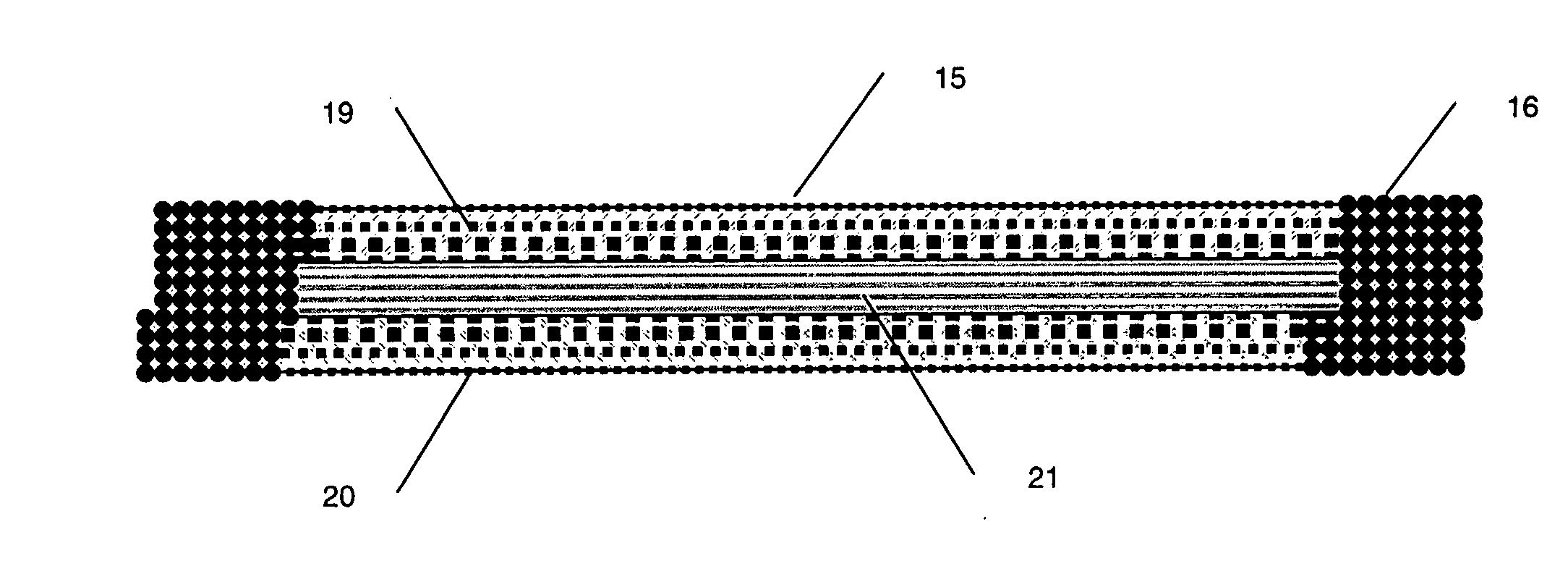Membrane electrode assembly and its manufacturing method
- Summary
- Abstract
- Description
- Claims
- Application Information
AI Technical Summary
Benefits of technology
Problems solved by technology
Method used
Image
Examples
Embodiment Construction
[0028] As shown in FIG. 1, a catalyst film layer is provided which includes a porous hydrophobic polymer membrane 11 and a mix 12 of catalyst and ionomer. Suitable porous hydrophobic polymer membranes include porous membranes of fluoropolymers, polypropylene, polyvinylidene fluoride. Preferred membranes include membranes of porous polytetrafluoroethylene, more preferably a membrane of expanded porous PTFE (sometimes referred to as ePTFE) produced by the process taught in U.S. Pat. No. 3,953,566 (to Gore). Porous hydrophobic polymer membrane 11 is preferred to have a thickness from 1 micron to 20 micron, porosity from 20%-95% and average pore size from 0.01 micro to 1 micron. The catalyst preferably comprises a very fine powder of a catalytic metal such as platinum. Furthermore, the catalyst is preferably mixed with a supporting material comprising a high surface area carbon, resulting in a platinum-on-carbon catalyst mixture. Such catalyst is available from commercial catalyst suppl...
PUM
| Property | Measurement | Unit |
|---|---|---|
| Thickness | aaaaa | aaaaa |
| Thickness | aaaaa | aaaaa |
| Thickness | aaaaa | aaaaa |
Abstract
Description
Claims
Application Information
 Login to View More
Login to View More - R&D Engineer
- R&D Manager
- IP Professional
- Industry Leading Data Capabilities
- Powerful AI technology
- Patent DNA Extraction
Browse by: Latest US Patents, China's latest patents, Technical Efficacy Thesaurus, Application Domain, Technology Topic, Popular Technical Reports.
© 2024 PatSnap. All rights reserved.Legal|Privacy policy|Modern Slavery Act Transparency Statement|Sitemap|About US| Contact US: help@patsnap.com










